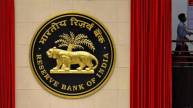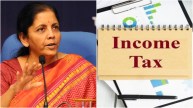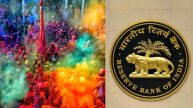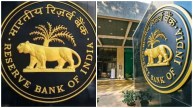New Delhi: India can tolerate a current account deficit (CAD) of 2.5-3.0% of GDP without encountering an external sector crisis, according to Reserve Bank of India Deputy Governor Michael Patra on Saturday.
“In a telling reminder of this fact, a record increase in oil prices and high gold imports took the current account deficit above this Plimsoll line and to historically high levels during 2011-13,” Patra said at an event in Bhubaneshwar celebrating 75 years of India’s independence.
“When the US Federal Reserve contemplated the end of easy monetary policy in the summer of 2013, India faced the taper tantrum and was labelled as among the fragile five,” he said.
India has recently seen pressure to reduce its trade deficit as a result of a substantial increase in global commodity prices brought on by supply-side disruptions as a result of Russia’s invasion of Ukraine.
In July, the domestic trade imbalance increased to a record $31 billion. The third-largest importer of crude oil in the world is India.
Many economists, including those from Bank of America, predict that India’s current fiscal year CAD would increase to about 3% of GDP, far higher than the previous fiscal year’s 1.23% level.
In making a forecast for India’s future development, Patra stated that the US GDP would surpass the Indian economy by 2048, according to figures from the Organization for Economic Cooperation and Development.
“This would make India the largest economy in the world after China,” Patra said, adding that in terms of purchasing power parity, the exchange rate appreciates with the prosperity of a nation and an increase in productivity.
As a result, the rupee is anticipated to overtake the Indonesian rupiah as the second-strongest currency in the world, according to Patra.
According to market exchange rates, India’s GDP is anticipated to exceed $5 trillion by 2027, and by that year, the GDP will have surpassed $16 trillion in terms of purchasing power parity.
With 7% of the global GDP, India currently has the world’s third-largest purchasing power parity economy.
According to Patra, there are four engines that might propel India toward becoming an economic giant given where the nation is at the moment.
These include the demographic dividend, manufacturing momentum, exports, and internationalisation in India.
The ratio of the domestic working-age population to that of China, Brazil, the United States, and Japan demonstrates an advantage for India, according to the RBI Deputy Governor, as the working-age populations of the other nations have already begun to decline.
India’s working-age population ratio will rise until 2045, and the government must seize the opportunity, according to Patra.
The fourth industrial revolution, which encompasses automation, data exchange, cyber-physical systems, and the internet of things, must be adapted by the local manufacturing sector, according to Patra.
He also emphasised the importance of increasing investment in human capital in order to produce a skilled domestic labour force.
The goal of raising India’s export contribution to at least 5% is achievable, according to Patra, thanks to a number of programmes like the One District One Product plan. India currently exports 2.7% of the world’s total exports, which amount to over $800 billion in products and services.
Patra emphasised that because India is the #1 beneficiary of remittances from the diaspora, Indians are already very globally oriented.
“The Indian rupee trades three times more offshore than onshore. If the INR turnover rises to equal the share of non-US non-Euro currencies in global forex turnover (4 per cent), the INR will have arrived as an international currency,” he said.










